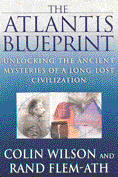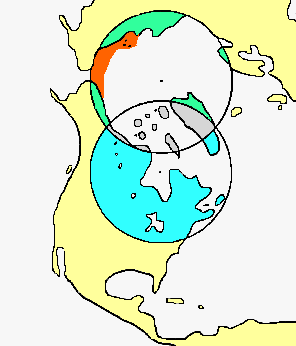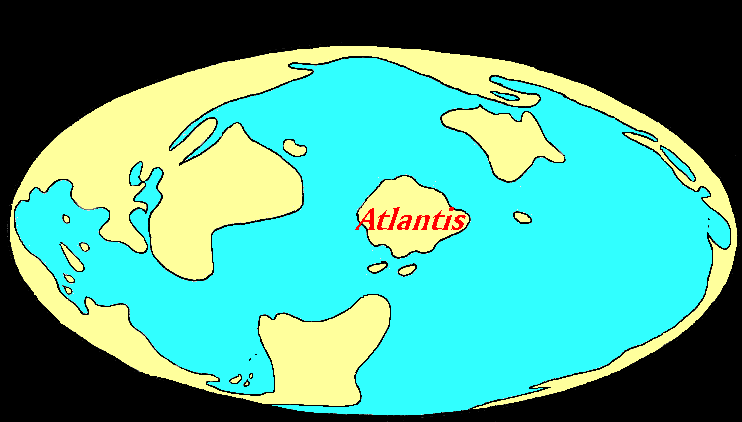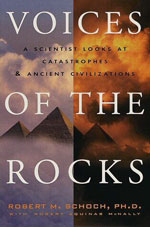
for a wide selection of books that challenge orthodox views of prehistory
on every continent
text translation service for many worldwide languages
visit
our specialist book pages to access many titles on the following subjects:
| astro-arch?ology & megalithic science
Atlantis, Lemuria and lost cities | asteroids,
comets & meteorite storms
ancient central & south America
book reviews
by
Rand Flem-Ath & Colin Wilson
You
can order this title directly from Amazon.com
by clicking on the book cover to the right
You can order this title directly from
Amazon.co.uk by clicking on the book cover to the left
|
|
The EU English Edition of “The Atlantis Blueprint: Unlocking the Mystery of a Long Lost Civilisation“ by Rand Flem-Ath and Colin Wilson, was first published on October 26 2000 The “The Atlantis Blueprint: Unlocking the Ancient Mysteries of a Long Lost Civilisation” by Rand Flem-Ath and Colin Wilson was published in March 2001 |
|
“The first time I read this book I made a list of the many aspects
that impressed me, and the many revealing insights into the ancient world
contained within its covers. As the book quoted from many other published
sources, I chose one which had impressed the authors, Colin Wilson and
Rand Flem-Ath, to read in between my second reading of
“The Atlantis Blueprint” and the writing of this review. That book
“Uriel’s Machine”, by Christopher Knight and Robert Lomas, and
it proved to be a wise choice – not least because Rand Flem-Ath argued
that while Knight & Lomas had identified the correct ‘sacred
latitude’ (55 degrees), they had the wrong hemisphere, and that
the correct location of where Uriel is said to have observed the ‘machine’
is on Lesser Antarctica, where Rand Flem-Ath places Atlantis before the
cataclysms marking the end of the last Ice Age.
Long
aware that Stonehenge contained certain astronomical phenomena that was
specific to the latitutde of its location, I was more than interested
in the concept of ‘sacred latitudes’ as proposed
by Rand Flem-Ath.
On
“The Atlantis Blueprint” I made another list, and compared the
two. The second list contained much I had not realised the significance
of during my first reading, as I had not then the benefit of understanding
the fuller picture that can only come with having read the whole book.
I also felt that any initial misgivings I may have had about the ‘first-person/third
person’ narrative style of the two authors, which I had found quite
confusing at first reading, had disappeared completely the second time
around.
The essence of the book is ‘Sacred Geometry’,
on both a local and a global geographical level. The same natural patterns
that ancient peoples observed in nature were adequately shown by Flem-Ath
and Wilson to have been incorporated not only into the various ancient
monuments themselves, but also into their local inter-relationships and
in the global distribution of many ancient sites that at some stage in
prehistory have been regarded as somehow ‘sacred’
by ancient cultures worldwide.
The authors showed in many cases that numerous ancient monuments had been
built on the same sites as much earlier structures, and that the earlier
the original structure seems to have been, the more exact appears to be
the underpinning knowledge of ‘natural geometry’
and ‘megalithic science’ demonstrated. Having
spent some thirty years quietly trying to unravel some of the legacy of
ancient mysteries left from archaic times myself, I found it difficult
not to feel that what Rand Flem-Ath and Colin Wilson have also uncovered
is another important piece of the jigsaw for our understanding of the
past – the ragged pattern of ‘civilisation in decline’.
|
Copyright © Rose & Rand Flem-Ath |
This ragged pattern, more easily understandable thanks to the pioneering work of Charles Hapgood, and the development of that work by Rose and Rand Flem-Ath, concerns the orientation of various ancient structures that are distributed around the globe in simple, regular patterns. What distinguishes one pattern from another is that some sites are orientated to the current north pole, while others, apparently built at much earlier epochs, are orientated to the location of the old north pole – where it stood before the last major earth-crust displacement.
The image to the left shows the locations of both the current and the previous north poles, and is an image/link directly to the Flem-Ath’s website. Click on the image and you will be taken on a tour of the theories, and the history of the theories, about the earth’s shifting crust, the various supposed locations of Atlantis, and the compelling similarities between various ancient maps and the world-view of our planet where Antarctica is shown as being ‘up’. |
A comparison that demands further explanation from our modern geographers,
who cannot deny the evidence of the works of ancient mariners and surveyors
now coming to light. Colin Wilson’s encyclopaedic knowledge of arch?ological
anomalies, coupled with his amazing ability to glean relevance from the
often discarded discoveries of various explorers and adventurers in recent
history, brings to the book the ‘glue’ that
has been sought after by countless others who have tried to see a clearer
picture of prehistory by attempting to link the remnants of the ancient
structures of various past cultures. The ‘blueprint’
that Rand Flem-Ath and Colin Wilson have pieced together, has been thoughtfully
presented in such a way that future researchers can benefit from their
methodology, and the
Flem-Ath website makes available the
formula by which any ancient site, anywhere in the world, can be tested
to see if it fits this ancient ‘blueprint’.
At times the book seems to digress far from the theme its title suggests,
but this is just an illusion the reader will entertain when only part-way
through. The complimentary partnership of Rand Flem-Ath and Colin Wilson
is at its best when delving into these apparent sidetracks, and only a
veteran unraveller of ancient mysteries such as Colin Wilson could have
guided the reader so adeptly through the quagmire of messianic lunacy
that the ‘Rennes Le Chateau phenomenon’ has
become, taking the reader right to the essence of that particular mystery
– the ‘sacred geometry’ reflected in the
regular distribution of ancient sites in that part of south-western France.
The ‘pentacle’ symbol, long held sacred by
many ancient cultures, and also by more modern ‘secret
societies’ that have variously seen themselves as the ‘protectors
of ancient wisdom’ and ‘guardians of sacred
knowledge’, has a long and complicated history. Expressed often
as a ‘rose’, this geometric figure was shown
by the authors to have been central to the astronomical basis of much
of what is termed ‘sacred geometry’, and
particularly to the pattern of the ‘observed geocentric
orbit of Venus’ – something central to the unfolding ancient ‘blueprint’
|
Copyright ©Rose & Rand Flem-Ath |
Since the publication of the book, “When The Sky Fell”, in which Rose and Rand Flem-Ath first put forward their ideas about Antarctica being Atlantis, there has been active debate in many circles about their dating of the cataclysm that undoubtedly happened at some time in the last 15,000 years. The Bauval & Hancock school of thought places much emphasis on a date of 10,500 BC, whilst the Flem-Aths prefer the date that Plato gives in his Critias and Timaeus dialogues – 9,600 BC.
The image to the left is a link directly to the Flem-Ath’s website, where you can find out more about Antarctica as Atlantis. Albert Einstein was in contact with Charles Hapgood before he died, and expressed support for Hapgood’s theories about ‘the earth’s shifting crust’ as a probable cause of the apparent polar changes at the end of the last Ice Age. But Hapgood was also in contact with Rand Flem-Ath, and it was this correspondence that eventually led him on a journey that resulted in the joint venture with Colin Wilson, and a research project which eventually became “The Atlantis Blueprint”.
|
A must read for everyone who is interested in the many mysteries of
the past. Although the authors’ inclusion of the metric system in their
proposed ‘blueprint’ will not please many
of those who have studied the ‘sacred geometry’
that is evident in the ancient monuments of various cultures around the
globe. In fact, this is the one proposal in the book which, to many informed
readers, may seem to let it down. But I would caution against the temptation
to throw out the baby with the bathwater, as the book contains much that
gives a clearer picture of the achievements of our ancestors, and, just
as importantly, of the cataclysmic predicaments in which they periodically
found themselves. More sorely needed proof, then, that we are living amongst
the ruins of both a long lost civilisation, as well as the ‘megalithic
observatories’ built by those who survived the catastrophe that
destroyed it.
Hopefully,
at some stage in the future, the authors will offer a more comprehensive
“The Atlantis Blueprint” for their inclusion of the recent metric
system in the geometric schemes of ancient geographers and surveyors –
the remnants of whose works, the authors adequately show, lie in post-catastrophic
ruin around the globe. This book is definately worth a second reading …
and a third.
of the Rocks”
by Robert M. Schoch & Robert Aquinas McNally
Asked to investigate the Sphinx at Giza, Schoch was troubled to find
evidence of a much greater age than the 4,500 years suggested by Egyptologists.
This led him to examine the possibility of a lost civilization dating
back to at least 10,000 B.C. Looking at linguistic, geological, and archaeological
evidence from around the world, he proposes an outline of prehistory that
differs markedly from our received wisdom–after all, if the Lascaux cave
paintings really are star maps, then we’ve got a lot of catching up to
do.”
find out
more about the new dating of the Great Sphinx
in the recently
“Voices of the Rocks”
“Exodus to Arthur”
by Mike Baillie
|
“This book reads like a detective story where the plot slowly unfolds. In the beginning it describes the use of tree rings to date old wood in buildings, paintings, ships and other archeological specimens. By a huge collaborative effort by many tree ring scientists it has been possible to establish almost continuous tree ring patterns over 6000 years in bristlecone pine, oak, and other species.
Most variations in ring width is due to local conditions. However, six peculiar worldwide, decade long episodes of reduced growth has become evident, for example around 1628 BC and 540 AD. The archeologist Baillie compares this with chinese, egyptian and other history, with the bible and with myths from all over the world, and with what is known of climate changes, vulcano eruptions, analyses of Greenland ice cores and the probability of impacts of comets and asteroids.
|
This book is the best one I have read. It appears to me that publishers
and editors for these books are demanding “human-interest
stories” presenting the thoughts and emotions of the author(s)
as they performed their research. Apparently most scientists do not have
the skill to write a human-interest story and still present compelling
scientific arguments. Professor Baillie pulls off the trick of mixing
the personal with the scientific almost seamlessly, probably because he
has a good sense of humor, which comes through in his writing.”
Like
to buy online? Get great extra rewards with an
Amazon.com Platinum Visa Card
please
take a look at the advice for
Visitors to Amazon.com
and reassure yourself with the
Shopping Guarantee
please take a look at our Ancient Mysteries Bookshoppe for a wide selection of books
that challenge orthodox views of prehistory on every continent
|
|
2019 Skywatching Calendar |
News & New Discoveries |
Marine Archaeology News 2019 |
Astro-Archaeology News 2019
The Morien Institute
1996-2019






